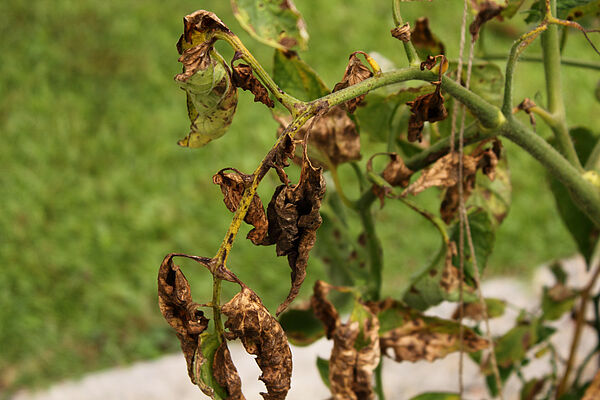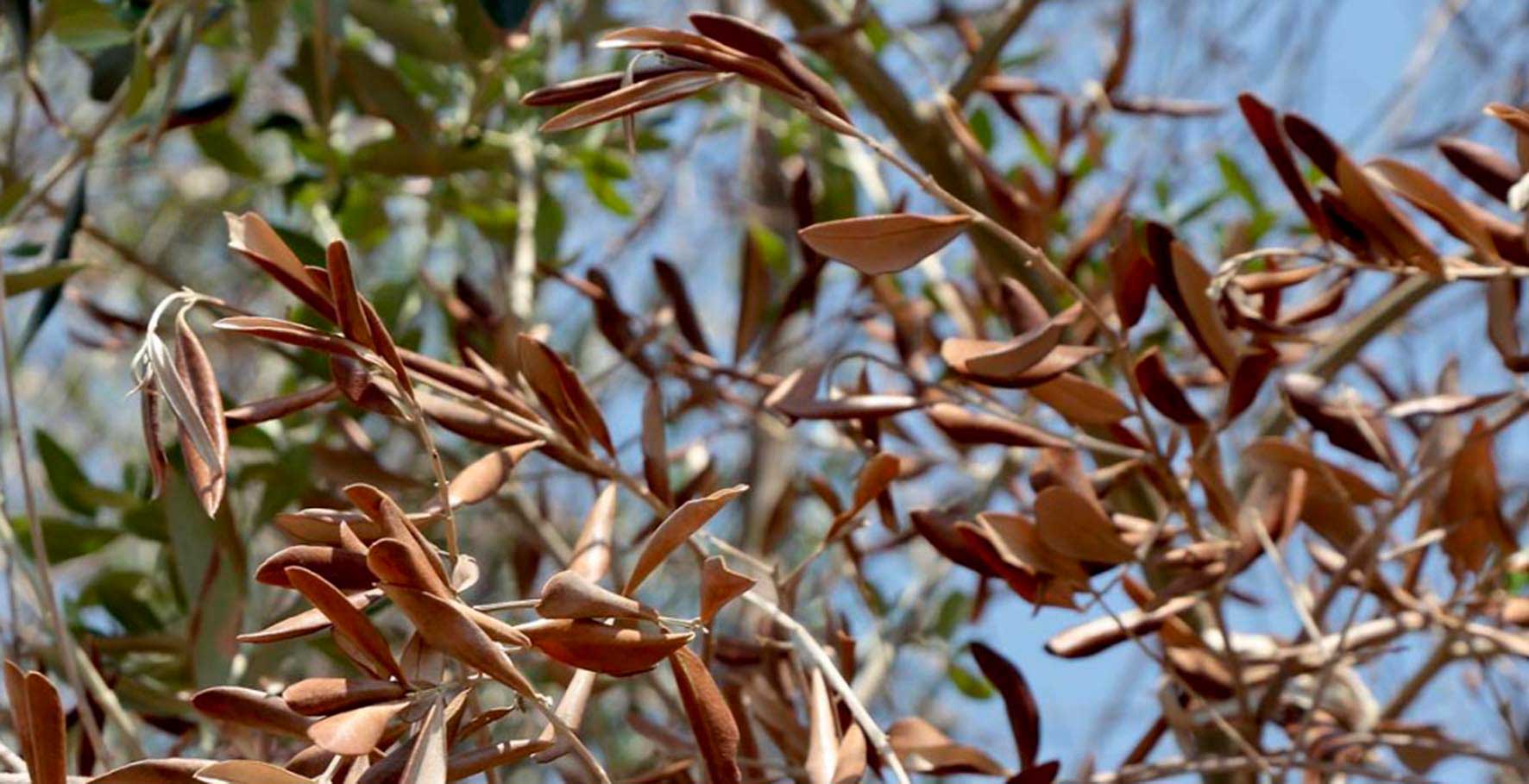
Verticillosis
WHAT IT IS AND HOW TO ELIMINATE
Plantas decorativas de jardín y/o interior
Verticillosis
Verticillium sp.
Pathogen:
Fungus
Type:
Risk to the plant:
HIGH
Verticilosis

WHO CAUSES IT?
Verticillium sp. It is a soil fungus that lives mainly in the form of resistance structures called microsclerotia, which can remain viable for years in the absence of cultivation. These structures germinate when they detect root exudates from susceptible plants. After germination, the fungus invades the root tissues and enters the vascular system, especially the xylem, where it multiplies and blocks the flow of water. During this process, it produces toxins and enzymes that promote colonization. As the plant dies or loses tissue, the fungus returns to the soil, where it forms new microsclerotia that remain as inoculum for future crops. It does not need aerial spores to spread, since its cycle is focused on the soil and the colonization of living roots. Its prolonged persistence in the soil and its ability to infect a wide variety of plant species make it a difficult pathogen to eradicate.
SYMPTOMS
In Plants, infection by Verticillium sp. It causes a disease known as verticillosis, characterized by the progressive wilting of the plant, which begins in the lower leaves and progresses towards the upper part. Xylem obstruction reduces the transport of water and nutrients, generating water stress and general weakening. The intensity of symptoms depends on factors such as the age of the plant, environmental conditions and the amount of inoculum present in the soil.
- Unilateral wilting of leaves or branches
- Yellowing and chlorosis in old leaves
- Necrosis on leaf edges and apices
- Dwarfism or general growth retardation
- General decay of the plant without evidence of root rot
- Brown streaks or discolorations in the vascular system when cutting the stem
- Premature leaf fall
- Partial or total death of the plant in advanced stages


DEVELOPMENT CONDITIONS
Temperature:
17 °C – 25 °C
Humidity:
60 % – 80 %
HOW IS IT SPREAD?
Contaminated soil, Irrigation water, Infected plants, Agricultural tools, Wind with soil dust, Personnel footwear and clothing, Transport of plant waste
HOW TO ELIMINATE IT?
Home treatments
There are no home treatments
Natural allies
Chemical treatments
There are no treatments for this disease. Treatments are directed at the insect vectors that transmit it. See insect treatments.
RECOMMENDED PRODUCTS TO ELIMINATE THE PEST
Sponsored link
Sponsored link
Sponsored link
Sponsored link
Sponsored link
Sponsored link
Effective against all types of fungi
REPELLENT PLANTS
Rosemary, Dill, Coriander
RECOMMENDATIONS
- Check the back of the leaves frequently, especially in dry weather.
- Spray water on the leaves to increase humidity and prevent them from settling.
- Keep plants healthy with good watering and adequate light.
- If you see cobwebs or damage, clean the leaves with a damp cloth or pressurized water.
- Use potassium soap or neem oil every few days until they disappear.






























